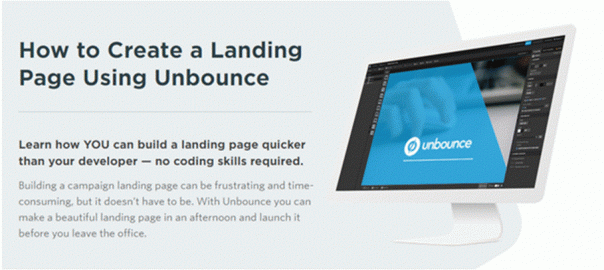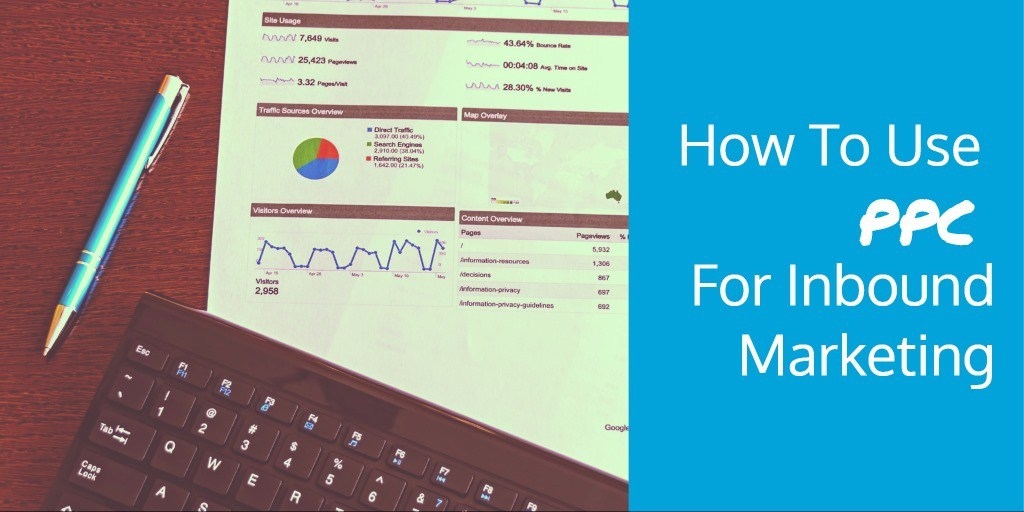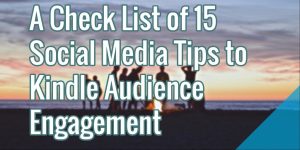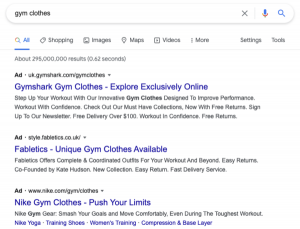Pay-per-click (PPC) campaigns may be considered as interruptive marketing by many. And they may not think it fits under the inbound marketing umbrella. Although this is true to an extent, it all depends on how you use it.
If you execute it correctly, a PPC campaign can work wonders to boost your inbound marketing efforts. The question is how will you do that? How will you execute a PPC campaign that plays an important role in inbound marketing?
How PPC Benefits Inbound Marketing
First, you need to thoroughly understand how PPC campaigns can influence your inbound marketing efforts. The obvious answer is that paid ads can boost the visibility of your business. When you search for something online, paid ads will be the top results.
As you can see in the screenshot below, all of the results at the top of the page are paid ads.
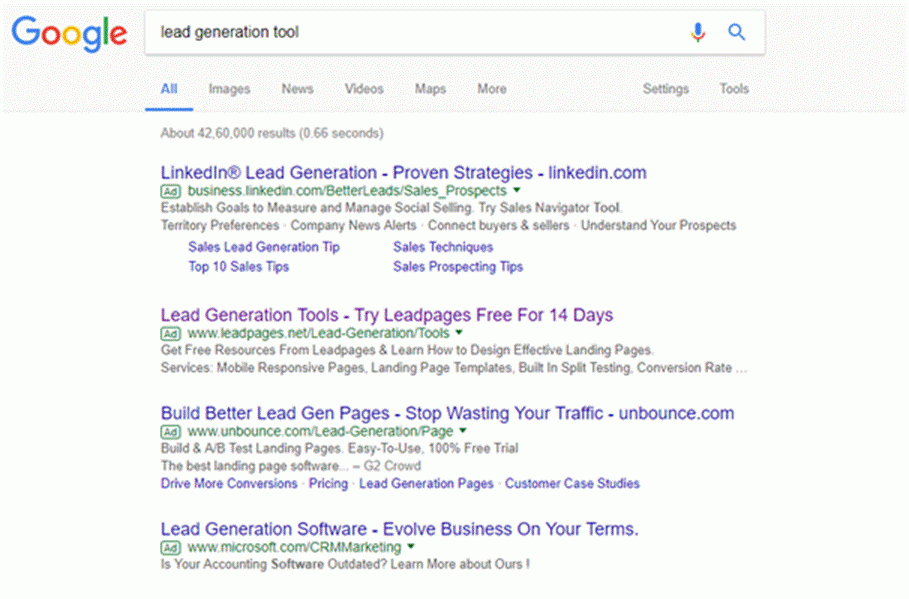
This increased visibility can immediately result in increased traffic, unlike organic SEO campaigns that progress over time. So a PPC campaign can be highly effective for enhancing your content marketing efforts, and generating more valuable leads. It can help you reach a new, highly relevant audience of people who are looking for information related to your product or service.
Tips On Using Ppc For Inbound Marketing
You can run your paid ads in alignment with your inbound marketing campaign by making a few adjustments to your existing PPC campaign. Likewise, data and insights collected from your PPC campaigns can help enhance your existing content strategy, helping you to create content that delivers better results.
Here are some of the best ways to use PPC for inbound marketing:
#1: Clearly Define Your Target Audience
Before running a PPC campaign to boost your inbound marketing efforts, you need to ask yourself who will be interested in your product offering? Whom should you target so that your campaign reaches an audience that is likely to convert?
Since you’re a marketer, you already know the difference a campaign can make when it reaches the right audience. So make a list of the characteristics of what your target audience looks like. You could include demographics such as age, location, gender, career, or job position.
You can further segment this target audience into smaller customer profiles so you can deliver more relevant ads to the right people. You can even create content that’s relevant for each customer profile that you cater to so you can create more personalized experiences for prospects.
#2: Choose The Right Keywords For Your Campaign
And of course, there’s the subject of keyword research. Just like with a regular PPC campaign or an SEO campaign, you’re going to need thorough research on which keywords you should be using. Ideally, long tail keywords would work best for inbound marketing as you need to deliver ads that specifically cater to the user’s search intent.
You can use the Google Keyword Planner tool to get ideas for relevant long tail keywords that perform well. When conducting your search for relevant keywords, select “Ad group ideas” instead of “Keyword ideas.” You’ll get a list of ad groups, which you can check out individually for long tail keywords that are relevant to you and have high search volumes.
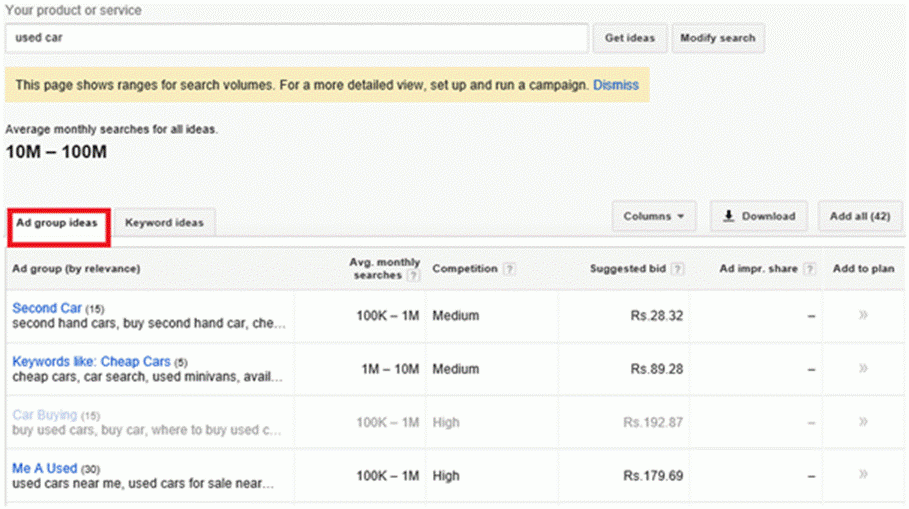
If you select “Car Buying” from the list above, you’ll get a list of long tail keyword ideas related to the term. As you can see in the screenshot below, there are phrases like “where to buy used cars” and “where can I buy a used car” among the ideas.
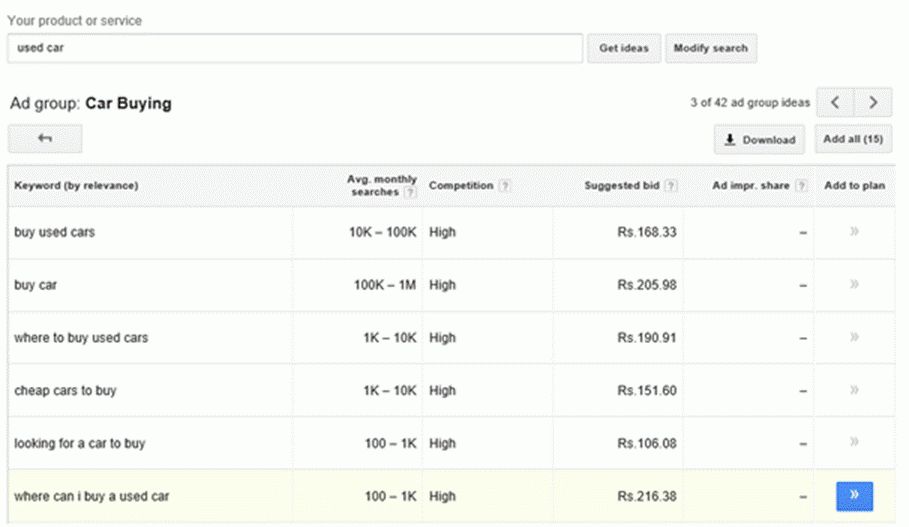
The search volumes for these phrases are quite high but the issue here is that the competition is high for all of them. You should keep looking through different ad groups until you find relevant phrases with low to medium competition and significant search volumes.
#3: Use PPC Data For Content Creation
After you’ve found an ad group that fits your needs, you can try testing the various keywords and phrases to see which of them delivers the best results. Based oninsights collected from those results, you should get a fair idea of what your target audience is looking for. And using this information, you can create valuable content that will meet the needs of your target audience.
Let’s say that you own a limousine service and a lot of your ad-clicks resulted from users who were looking for “wedding limo”. It’s clear that a lot of your visitors are planning their wedding. So you can create content that will help couples in choosing a limousine for their wedding.
For example, you can write a blog post about the different types of limousines suitable for a wedding. Instead of promoting your business through the post, you should make sure that people can use the information to make the right decision.

This is just one example of the type of content you can create using insights from PPC campaigns. You can also create comparison content, how-to content, tutorials, etc. as long as it provides the relevant audience with valuable information.
#4: Promote Valuable Content Using Paid Ads
You can also use PPC to promote the valuable content that you’ve created. In many cases, this could work much more effectively than your generic paid ads that promote your services. By promoting this type of valuable information through paid ads, you can attract people who are still conducting research and haven’t made a decision about buying something.
The goal is to provide them with the type of information that will guide them in the decision-making process. This type of promotion is best runon social media, where you can easily target relevant users even if they aren’t actively searching for products or services related to your business.
But when they see a piece of promoted content that’s interesting and useful to them, they might want to check it out. Many of them won’t convert immediately but they’re already valuable leads once they click on your ad.
On LinkedIn, you can see LinkedIn Marketing Solutions promoting their free course on how to use LinkedIn advertising. This free course could provide valuable information for marketers who had never even considered advertising on the platform before. By introducing prospects to their advertising feature, LinkedIn could potentially generate a lot more advertisers.
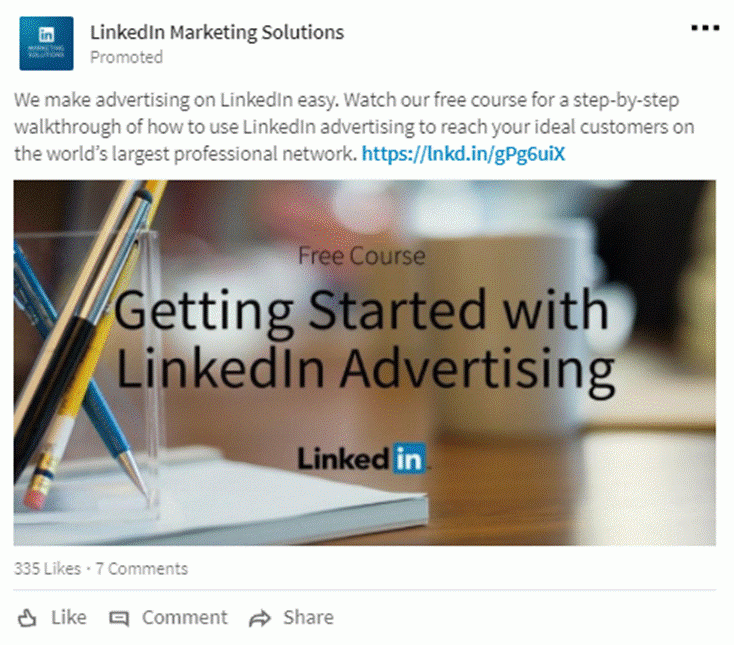
You can retarget leads who clicked on your initial promotions by promoting other related pieces of content or resources that they might find useful. Through regular retargeting, you should be able to engage them and eventually get them to convert.
It’s also important to avoid focusing your PPC efforts on only one piece of content that you chose to amplify. You should mix it up with different pieces of content along with ads promoting your products and services as well.
Remember that even with content amplification, you should still follow the same best practices as your regular ads. This means that you should use compelling and actionable language that clearly expresses your messaging. And it should include a clear CTA, which tells the audience exactly what you need them to do next.
#5: Optimize PPC Landing Pages
Whenever applicable, you should also build a unique landing page or optimizing the existing one for your PPC ads. Since the landing page should be relevant to what you are advertising, you need to make sure that the focus is on the offer. Remove any distractions that could redirect visitors from converting.
For example, if your ad is for a free eBook on creating landing pages, the landing page should specifically focus on the eBook. There should be an attractive and actionable headline that clearly talks about the product. There should also be some content to highlight what people will get from downloading the eBook.
And you should also include a clear CTA button that will compel visitors to take the desired action. You could add some imagery that’s relevant to the offer but avoid adding extra elements that could prove to be a distraction.
Marketing Mojo has used this tactic to help Southern States Cooperative in improving their PPC conversion by 79%.
In the following screenshot, the top result for “landing page tutorial” is an ad for Unbounce. As you can see in the description, they’ve invited people to learn how they can create landing pages using the drag-and-drop builder from Unbounce.
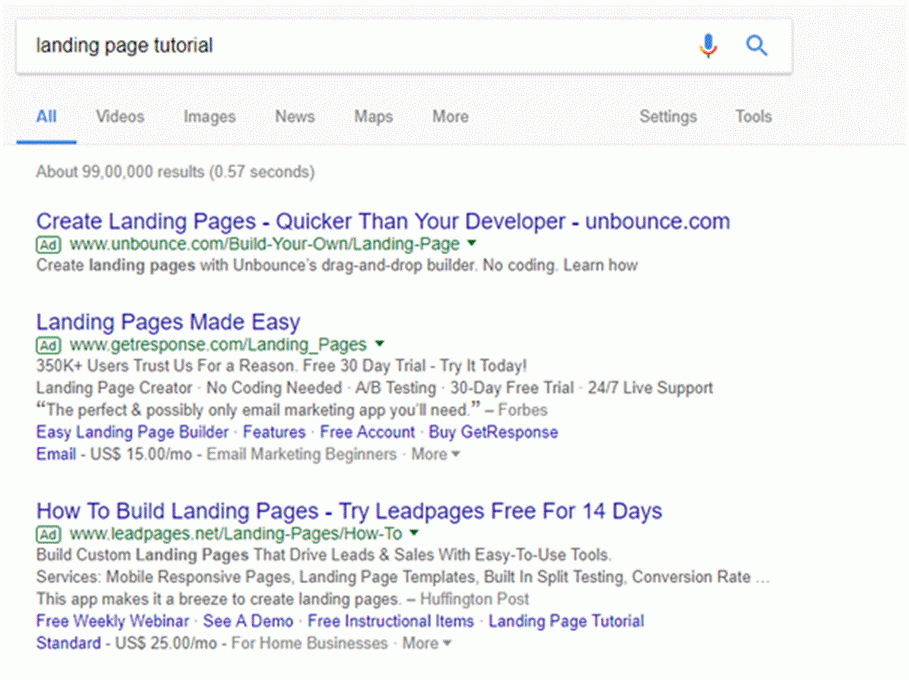
This ad will take you to a landing page that’s highly relevant. The page begins with an introduction about the purpose of the page i.e. to teach people how to create a landing page usingUnbounce.
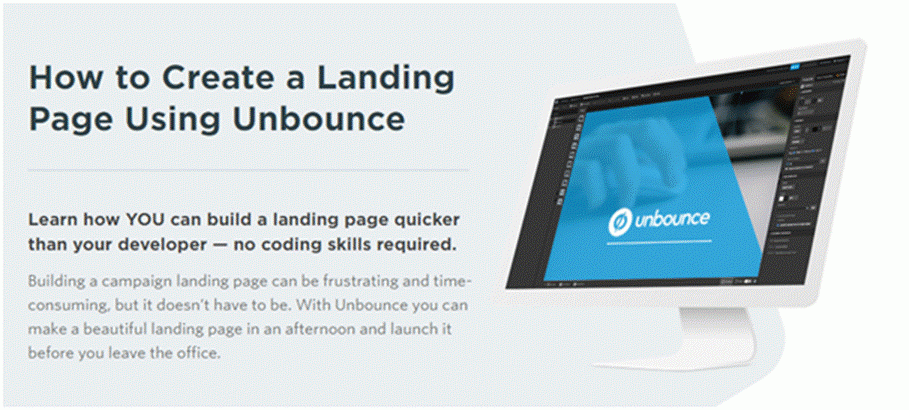
As you scroll down, you can also see a demo video that shows the tool in action. The video is focused on demonstrating how a specific customer had utilized the tool before.
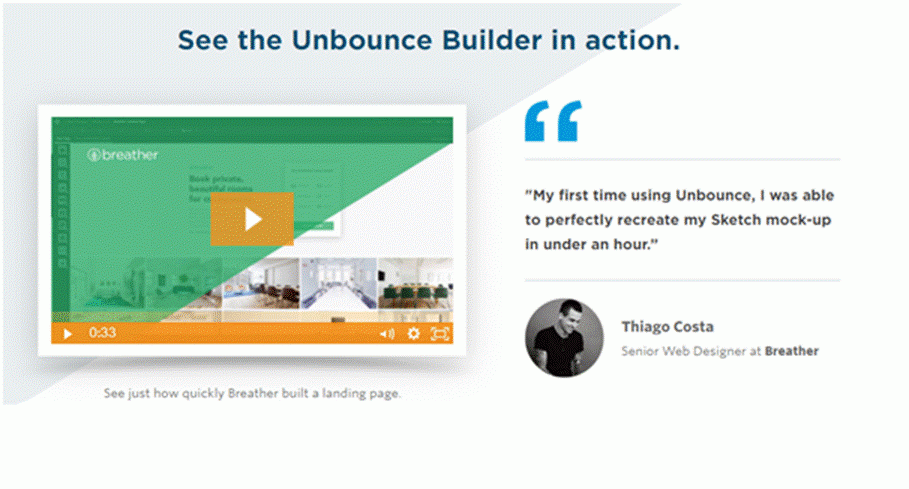
And further down, you get the step-by-step guide on how to build a landing page using Unbounce. This is an excellent example of how a landing page has been developed and optimized to suit the PPC campaign.

Conclusion
These are some of the best ways you can use PPC for more effective inbound marketing. It’s crucial to stop comparing the two channels to see which works better. Instead, you can save costs and drive higher revenues by getting them to work together and for each.
* Adapted lead image: Public Domain, pixabay.com via getstencil.com
The post How To Use PPC For Inbound Marketing appeared first on Search Engine People Blog.
(109)
